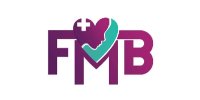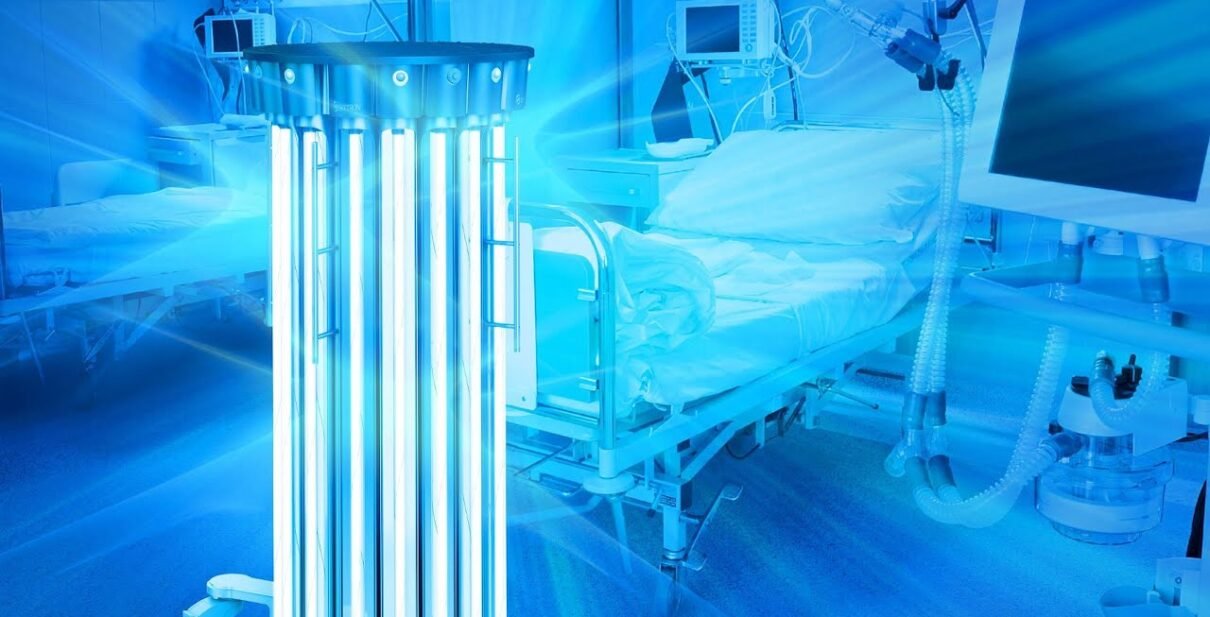The Hidden Threat in Healthcare Facilities
Hospital-acquired infections (HAIs) affect millions of patients worldwide each year, extending hospital stays, increasing healthcare costs, and causing preventable deaths. Understanding and implementing effective disinfection strategies, particularly UV sterilization, is crucial for patient safety.
Understanding Hospital-Acquired Infections
The Statistics Are Sobering
- 30-40% of HAIs result from contaminated healthcare worker hands
- Traditional cleaning misses up to 50% of surfaces
- Drug-resistant bacteria can survive on surfaces for months
- Critical care areas have the highest contamination rates
Common HAI Pathogens
MRSA (Methicillin-Resistant Staphylococcus aureus):
- Resistant to multiple antibiotics
- Spreads via contaminated surfaces
- Common in surgical sites
VRE (Vancomycin-Resistant Enterococcus):
- Highly resistant pathogen
- Survives on surfaces for weeks
- Particularly dangerous for immunocompromised patients
CRE (Carbapenem-Resistant Enterobacteriaceae):
- “Nightmare bacteria”
- Limited treatment options
- High mortality rate
C. difficile (Clostridium difficile):
- Spore-forming bacteria
- Causes severe diarrhea
- Resistant to many disinfectants
Acinetobacter:
- Multidrug-resistant
- Thrives in ICU environments
- Difficult to eradicate
The Science of UV-C Sterilization
How UV-C Works
Ultraviolet-C light (200-300nm wavelength) is germicidal because it:
Damages DNA/RNA Structure:
- Creates thymine dimers in DNA
- Prevents microbial replication
- Inactivates living cells
- Effective against bacteria, viruses, fungi, and spores
No Chemical Residue:
- Physical disinfection process
- No toxic byproducts
- No resistance development
- Environmentally friendly
Advantages Over Chemical Disinfection
Comprehensive Coverage:
- Reaches shadowed areas chemicals miss
- 360-degree disinfection capability
- Effective on all surfaces
- No wiping required
No Human Error:
- Automated process
- Consistent effectiveness
- Eliminates cleaning variability
- Documented cycles
Speed and Efficiency:
- 15′ x 12′ room in 60 minutes (initial)
- 25-30 minutes for routine cycles
- No drying time needed
- Quick room turnover
Safety Profile:
- No chemical exposure for staff
- No residue on surfaces
- No material damage
- Safe for sensitive equipment
Types of UV Sterilization Systems
Portable UV-C Towers (Like Stera-Rays 825 Watt)
Features:
- Mobile for multiple rooms
- High-output UVC energy
- Remote operation
- User-friendly design
Best For:
- Patient room disinfection
- Operating theatre terminal cleaning
- Isolation room decontamination
- Emergency disinfection needs
Operational Considerations:
- Room must be sealed
- No personnel during operation
- 360-degree exposure needed
- Multiple positions for large rooms
Built-In Air Handling Systems (Like SafeAire)
Features:
- Continuous air disinfection
- HEPA filtration integration
- Temperature and humidity control
- Airborne pathogen reduction
Best For:
- Operating theatres
- ICUs and critical care
- Isolation rooms
- Continuous protection needs
Benefits:
- Constant air purification
- Reduced airborne transmission
- Enhanced HVAC performance
- Long-term infection prevention
Wall-Mounted UV Systems (Like Protectaire 35W)
Features:
- Fixed installation
- Continuous low-level disinfection
- Air and surface treatment
- Activated carbon filtration
Best For:
- Patient rooms
- Waiting areas
- Clinics
- Small treatment rooms
Advantages:
- 24/7 operation capability
- Minimal space requirements
- Low maintenance
- Cost-effective solution
Critical Areas Requiring UV Disinfection
Operating Theatres
Why It’s Critical:
- Surgical site infections costly and dangerous
- High patient vulnerability
- Multiple surfaces to clean
- Time pressure between cases
UV Protocol:
- Terminal cleaning after each case
- Overnight comprehensive disinfection
- Emergency contamination response
- Regular scheduled deep cleaning
Intensive Care Units
Risk Factors:
- Immunocompromised patients
- Invasive devices
- High antibiotic use
- Long patient stays
UV Implementation:
- Room disinfection at patient discharge
- Regular preventive cycles
- Isolation room protocols
- Equipment sterilization
Isolation Rooms
Special Considerations:
- Highly contagious patients
- Drug-resistant organisms
- Airborne pathogens
- Strict containment needed
Enhanced Protocols:
- Pre and post-patient disinfection
- Daily supplementary cycles
- Air handling system UV
- Anteroom treatment
Emergency Departments
Unique Challenges:
- Unknown patient conditions
- High turnover
- Limited cleaning time
- Varied contamination
Quick Turnover Solutions:
- Rapid cycle UV systems
- Portable units for flexibility
- Treatment room focus
- High-touch surface emphasis
Implementing UV Sterilization: Best Practices
Step 1: Assessment
- Identify high-risk areas
- Evaluate current infection rates
- Assess room sizes and layouts
- Determine budget and resources
Step 2: Selection
- Choose appropriate UV system type
- Consider coverage requirements
- Evaluate operational needs
- Plan for multiple units if needed
Step 3: Protocol Development
Standard Operating Procedures:
- Room preparation requirements
- Cycle duration guidelines
- Safety protocols
- Documentation requirements
- Staff training needs
Safety Measures:
- Motion detectors for accidental entry
- Remote operation requirements
- Clear signage
- Emergency shut-off procedures
Step 4: Staff Training
- UV technology education
- Safety protocol training
- Operating procedure training
- Troubleshooting basics
- Documentation requirements
Step 5: Integration
- Coordinate with housekeeping schedules
- Integrate with room turnover processes
- Establish emergency protocols
- Create monitoring systems
Step 6: Monitoring and Validation
Biological Indicators:
- Place test organisms in room
- Run UV cycle
- Verify kill rate
- Document results
Chemical Indicators:
- Use UV-sensitive cards
- Confirm adequate exposure
- Identify shadowed areas
- Adjust placement as needed
Performance Tracking:
- Monitor HAI rates
- Track room turnover times
- Document UV cycles
- Analyze cost savings
Common Misconceptions About UV Sterilization
Myth 1: “UV damages medical equipment” Reality: Proper UV-C wavelengths don’t damage most medical equipment, plastics, or electronics when used correctly.
Myth 2: “Chemical cleaning alone is sufficient” Reality: Studies show traditional cleaning misses significant surface areas; UV provides comprehensive coverage.
Myth 3: “UV sterilization is too expensive” Reality: When considering HAI costs (extended stays, treatments, litigation), UV systems quickly pay for themselves.
Myth 4: “UV can replace manual cleaning” Reality: UV supplements but doesn’t replace manual cleaning. Both are needed for optimal results.
Myth 5: “All UV systems are the same” Reality: Power, wavelength, coverage, and quality vary significantly between systems.
Measuring Success
Key Performance Indicators
Infection Rates:
- HAI incidence reduction
- Specific pathogen tracking
- Surgical site infection rates
- Ventilator-associated pneumonia rates
Environmental Culture:
- Surface contamination levels
- High-touch point cleanliness
- Pre/post UV sampling
- Comparison to baseline
Operational Metrics:
- Room turnover times
- Staff time savings
- Supply cost reductions
- System uptime percentages
Financial Impact:
- HAI cost savings
- Length of stay reductions
- Litigation avoidance
- Reputation enhancement
The Future of UV Sterilization
Emerging technologies include:
- Far-UVC (222nm) – safe for occupied rooms
- Robotic UV systems with AI navigation
- Integration with hospital information systems
- Real-time monitoring and reporting
- Combination UV and hydrogen peroxide systems
Regulatory and Accreditation Considerations
Compliance Requirements:
- OSHA safety standards
- CDC guidelines integration
- State health department regulations
- Accreditation body standards (Joint Commission, NABH, etc.)
Documentation:
- Standard operating procedures
- Training records
- Cycle logs
- Validation studies
- Incident reports
Cost-Benefit Analysis
Initial Investment
- Equipment purchase: ₹2-10 lakhs depending on system
- Installation: Minimal for portable units
- Training: Included with most systems
- Safety signage: Nominal cost
Ongoing Costs
- Lamp replacement: Annual or bi-annual
- Electricity: Minimal consumption
- Maintenance: Quarterly or annual
- Validation testing: Periodic
Return on Investment
- HAI reduction: Each prevented infection saves ₹2-5 lakhs
- Reduced antibiotic use: Significant cost savings
- Shorter hospital stays: Increased bed availability
- Staff efficiency: Time savings in cleaning
- Reputation: Enhanced patient confidence
- Accreditation: Improved scores
Typical ROI Timeline: 6-18 months for most facilities
Choosing the Right UV System
For Large Hospitals:
- Multiple portable units (Stera-Rays 825W type)
- Integrated HVAC systems (SafeAire type)
- Combination approach for comprehensive coverage
For Small Clinics:
- Wall-mounted systems (Protectaire 35W type)
- Single portable unit for flexibility
- Focus on high-risk areas
For Home Healthcare:
- Portable UV wands
- Small room units
- Easy-to-use systems
Complementary Infection Control Measures
UV sterilization works best when combined with:
Hand Hygiene:
- Alcohol-based hand rubs
- CHG surgical scrubs
- Regular handwashing
- Staff compliance monitoring
Surface Disinfection:
- Hydrogen peroxide solutions
- Quaternary ammonium compounds
- Silver-based disinfectants
- Regular cleaning schedules
Environmental Controls:
- HEPA filtration
- Proper ventilation
- Humidity control
- Traffic flow management
Personal Protective Equipment:
- Appropriate PPE for tasks
- Proper donning/doffing
- Adequate supplies
- Staff training
The Bottom Line
UV sterilization represents a powerful tool in the fight against hospital-acquired infections. When properly implemented as part of a comprehensive infection control program, it can significantly reduce pathogen transmission, improve patient safety, and generate substantial cost savings.
The key is selecting appropriate systems, implementing proper protocols, training staff thoroughly, and continuously monitoring performance. With healthcare-associated infections remaining a major challenge, UV sterilization technology offers a proven, chemical-free solution that addresses gaps in traditional cleaning methods.
Ready to implement UV sterilization in your facility? Contact FMB Healthcare Systems for expert consultation and quality UV sterilization equipment.


